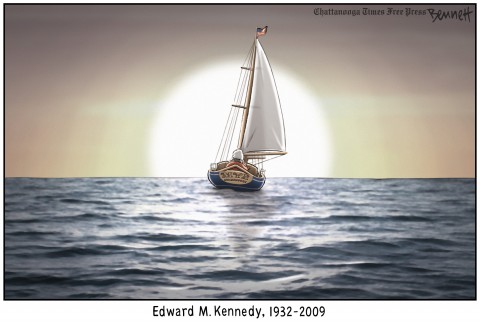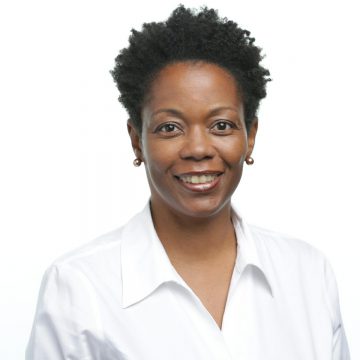Blog
September 8, 2009
It is difficult on this Labor Day 2009 not to worry and fret about our collective ability in this country to do what is best, even in our own best interest. The two major policy debates of the day – health care and unemployment – came together this weekend in a heap of statistics, misinformation and just plain rage that leaves me, like so many, wondering: how will we move in the right direction? What is right action?
Heartbreaking stories of financial ruin and despair from job loss and crushing unemployment caused by the recession or untreated illness and bankruptcy from the effects of a completely broken health care system. And, at root of both issues we find the profit motive and really bad policy choices over the last two decades. Read More
September 3, 2009

Source
Yesterday I had the opportunity to visit with staff of a few unique organizations in central Vermont, including a conversation with Peter Forbes at the Center for Whole Communities in Fayston. What Peter, his wife Helen Whybrow, and their colleagues have created at Knoll Farm, a working organic farm, is truly inspiring, not just for the beauty of the land it occupies and the amazing views that are afforded of the surrounding mountains of Mad River Valley, but also because of the thoughtful attention that has been given to every detail of the Center and the programs that it offers.
The Center for Whole Communities is focused on reconnecting people to land, to one another, and to community as a way of healing the divisions that exist between those who are working for social justice and environmental conservation. To this end they have created a setting and experiences that carefully tend to this mission of reconnection, from immersing people in the landscape, to engaging them in dialogue and storytelling, to grounding them in creative expression and contemplative practice. Read More
September 2, 2009
“Some of the people who have been appearing at town hall meetings lately say they want to take back their country. Me too. However, I am left wondering what country they want to take back.” Excerpt from “The country we should have back”.
August 31, 2009
“The Work Goes On, The Cause Endures, The Hope Still Lives, And The Dream Shall Never Die.”
Illustrated by Clay Bennett, Chattanooga Times Free Press


August 28, 2009
On Wednesday, August 26, 2009, a great public servant and leader died. Massachusetts Senator Edward “Teddy” Kennedy’s legacy of service, championing the under-served and working class of our country, had come to an end in one form, now to transition to a legacy of another sort. It was the second day of the Facilitative Leadership course I was co-training, and of course, that morning, we paused to mourn, reflect, reminisce and examine our study of leadership in the brilliant, shining light of his life long leadership practice.
Later in the day, I came across this blog piece published by the Harvard Business Review, entitled, “How Ted Kennedy Got Things Done,” and couldn’t help but notice how much the observations of his distinguished service track so well with several of the attributes and principles of Facilitative Leadership: Read More
August 28, 2009
By Melinda Weekes
On Wednesday, August 26, 2009, a great public servant and leader died. Massachusetts Senator Edward “Teddy” Kennedy’s legacy of service, championing the under-served and working class of our country, had come to an end in one form, now to transition to a legacy of another sort. It was the second day of the Facilitative Leadership course I was co-training, and of course, that morning, we paused to mourn, reflect, reminisce and examine our study of leadership in the brilliant, shining light of his life long leadership practice.
Later in the day, I came across this blog piece published by the Harvard Business Review, entitled, “How Ted Kennedy Got Things Done,” and couldn’t help but notice how much the observations of his distinguished service track so well with several of the attributes and principles of Facilitative Leadership: Read More
August 27, 2009
Today I recognize the shoulders that we stand upon as willing and enthusiastic collaborators! Click here to listen to an interview with David Straus in recognition of the 40th anniversary of his founding Interaction Associates and officially launching his pioneering collaborative methods, of which the Interaction Institute for Social Change is a grateful inheritor.
David remarks the changes he has witnessed over the last four decades, including an overall movement from resistance to embrace of collaboration as an effective and often necessary approach to solving problems and leveraging opportunities in organizations and communities. And what does the future hold? For David, it comes down to seeing and using collaboration as a means of deeply shifting culture.
And what about you? What and who would you raise up as part of the collaboration canon? And what are the next frontiers?
August 24, 2009
I just had the unbelievable privilege of facilitating the leadership convening of the Gathering for Justice at the Stone House in North Carolina. The experience left me with a powerful sense of being “on purpose” of doing precisely what I’m supposed to be doing in the world. I can only wish that more of us have that experience as we go about our work and our lives. There is more to say than I could possibly capture with a single blog post, but I’m not speaking in hyperbole when I tell you that this is the closest I have come to the potentiality of real movement.
The Gathering looks at juvenile incarceration not just as an issue, but as moral calling (this article just out today in the New York Times and if you are outraged, be sure to check out CJNY). Incarcerating our children is a counter-evolutionary move, it is indicative of a systems break down at the heart of our society. So the Gathering is not just about a compelling issue, it is about a daring to rethink how we go about movement. Read More
August 24, 2009
Eduardo Galeano is a man who really gets us to look at a new angle. And that is really what we need now right, new angles. New ways of thinking. New attempts at approaching the same problems that have plagued our history. A friend of mine tweeted this NPR article about Galeano’s current days, back home in Uruguay. It is short and sweet, and worth a read.
Galeano is famous for exploiting the beauty in contradictions, while at the same time being a forceful voice against injustice, poverty and war. One of his most famous writings entails the line, “Courage is born of fear, certainty of doubt”. The article mentioned above, explores one of the short stories of history which Galeano recounts in his new book Mirrors. Read More
August 20, 2009
“With the sophisticated mental apparatus we have used to build world eminence as a species, we have created an environment so complex, fast-paced, and information-laden that we must increasingly deal with it in the fashion of the animals we long ago transcended.” – Robert Cialdini
As Alfred North Whitehead once suggested, one of the main conundrums of our evolution as a species seems to be that it has largely depended upon our ability to engage in more and more activities without thinking about them. Hence a world built upon scientific discovery, full of ever declining numbers of people who are scientifically literate. Hence a world of increasing complexity that we often meet with relatively primitive automaticity.
In her book, The Canon, Natalie Angier provides an entertaining primer on the hard sciences for adult non-scientists and along the way makes a strong case for the need for more of us to bring greater rigor and discipline of thought to the day-to-day. She illustrates how we often operate with models of physical reality that are simply false. In many cases, these models were ingrained at an early age and remain stubbornly embedded, owing to certain neurological tendencies. Not understanding these tendencies, we remain convinced that we are more critical in our thinking than we actually are. Read More
August 19, 2009
Yesterday I started writing about health and social change and I alluded to the promises of the food movement and its implications for social transformation. Let me be completely clear – I am not currently affiliated with any formally organized aspect of the food movement. However, as I think about the type of social change that will truly make a difference, the change that keeps people like my father physically healthy while also augmenting our collective experience of freedom, it seems to me that the food movement has a lot to offer.
Industrialized food and the commercialization of edible goods that have no benefit for our bodies is one of the key reasons why Americans are falling ill, poor communities and people of color bear the burden of this problem. Building movement around food allows us to do a number of things: Read More
August 18, 2009
Where does social change begin? I’ve been asking myself this question for a long time but it hit me especially hard this weekend. I was sitting with my father, who is in his early fifties, we were waiting for my uncle and chatting with a friend who is also about their age, all of them have diabetes. At that point I had to wonder why it has almost become a rite of passage for Puerto Rican men of a certain age to sit around and discuss the onset of diabetes.
The Health Care debate has been sad and frustrating. Even with the best president in a generation there seems to be so little we can do. And it feels so far away from the day to day lives of those who are getting sick by virtue of simply living and eating in our society. So where does social change begin? Is it by slowly bringing progressive voices into state power? Is it by organizing people to feed themselves better? Is it all about personal responsibility? Read More



